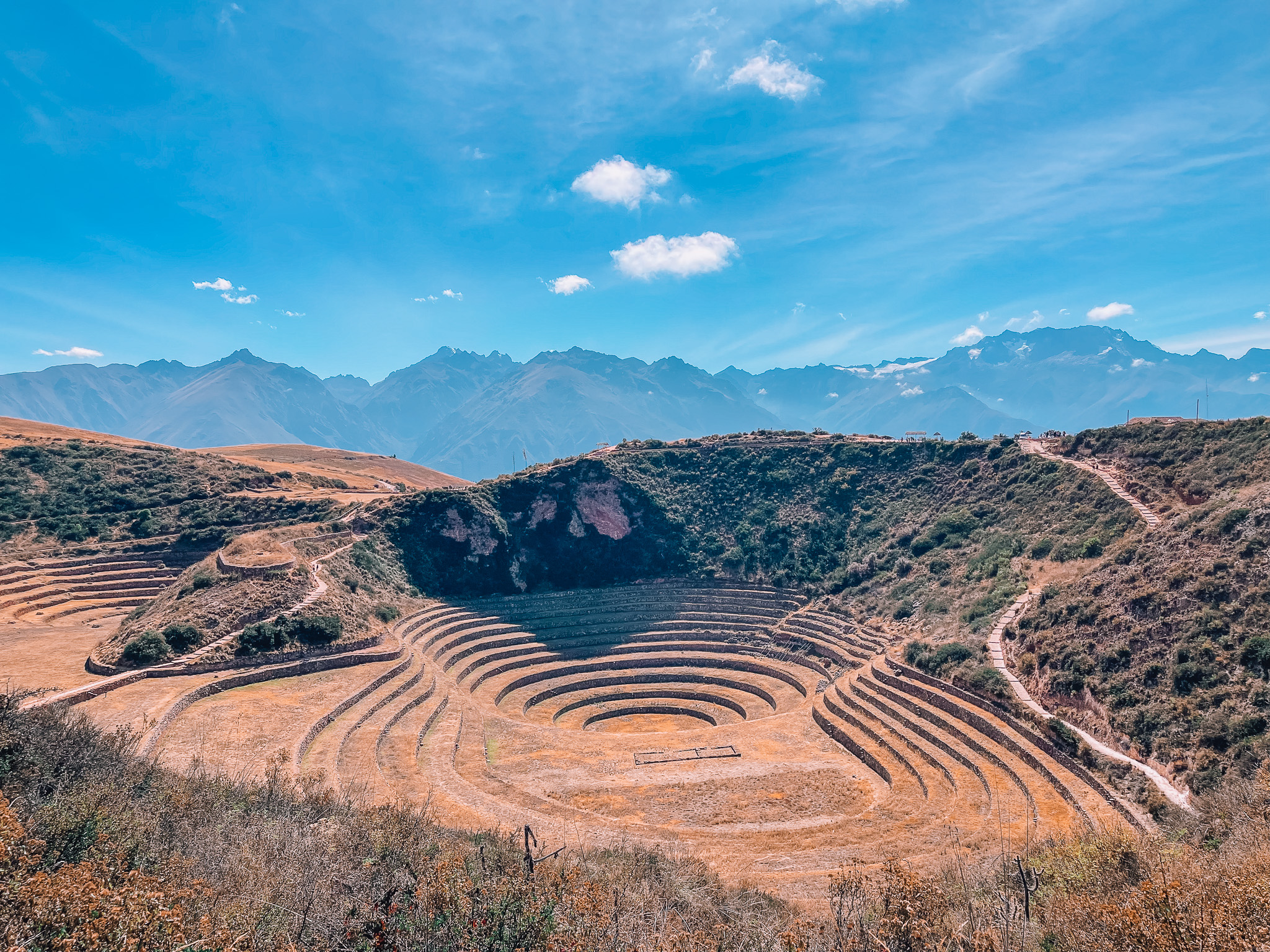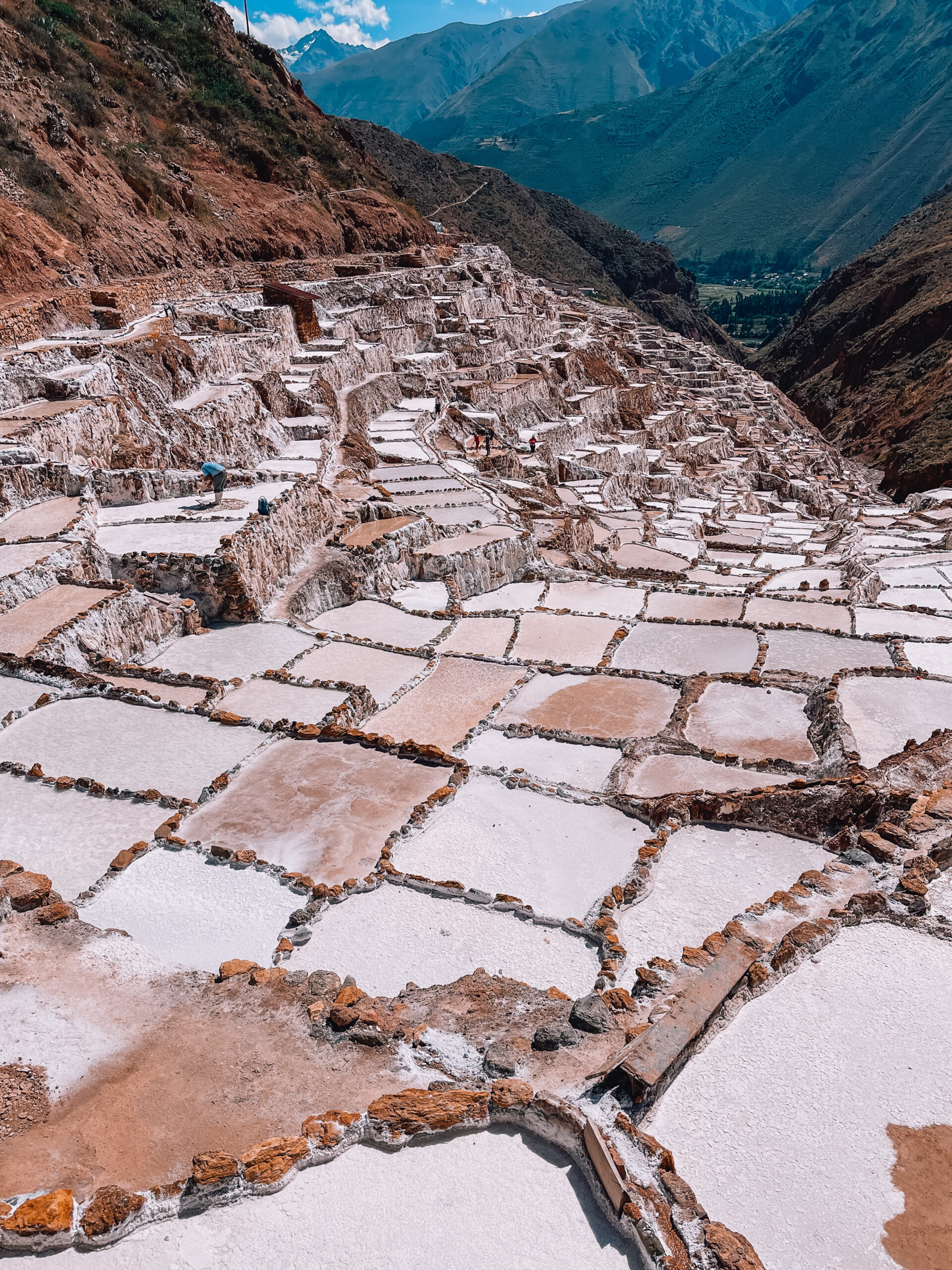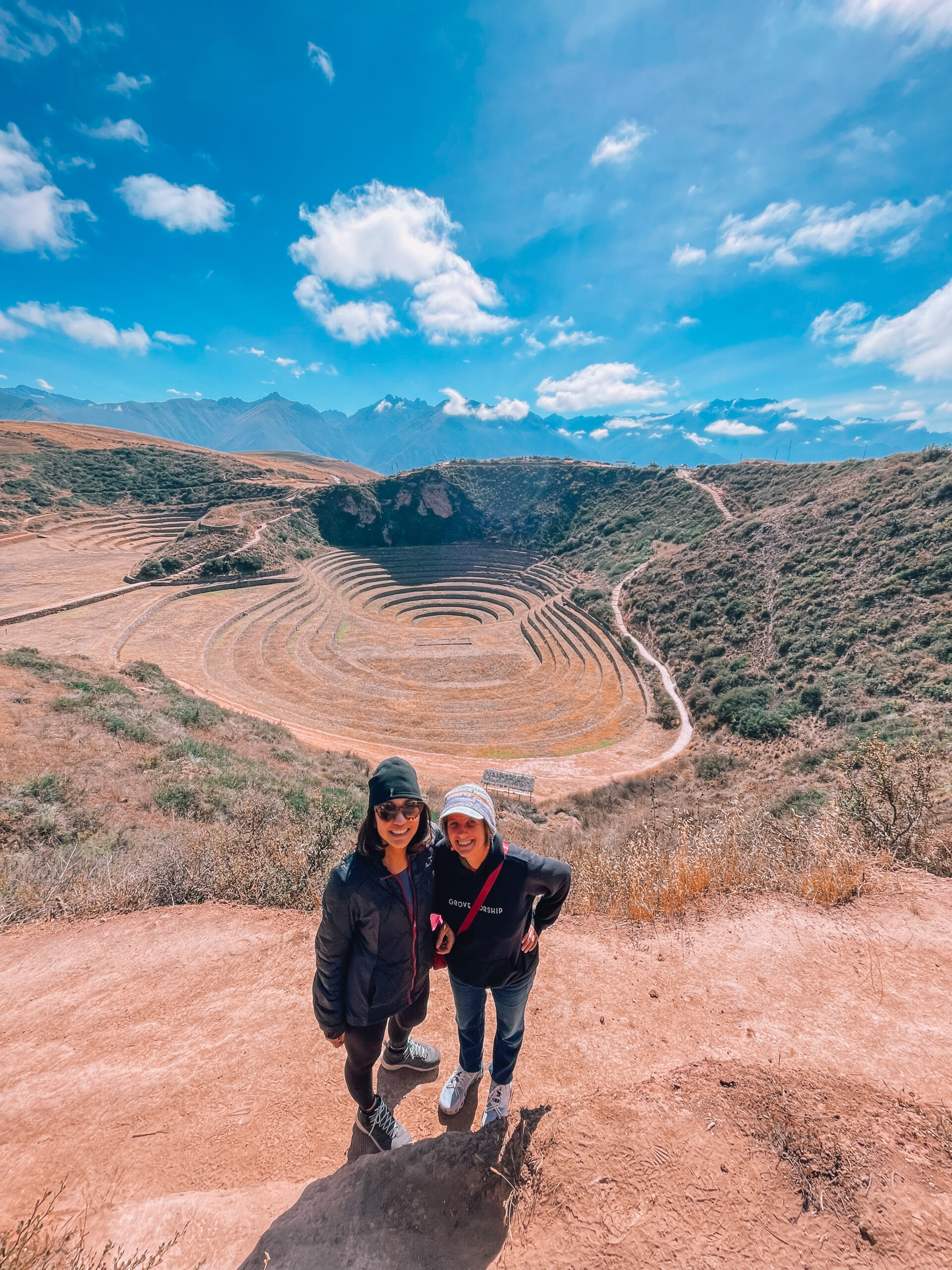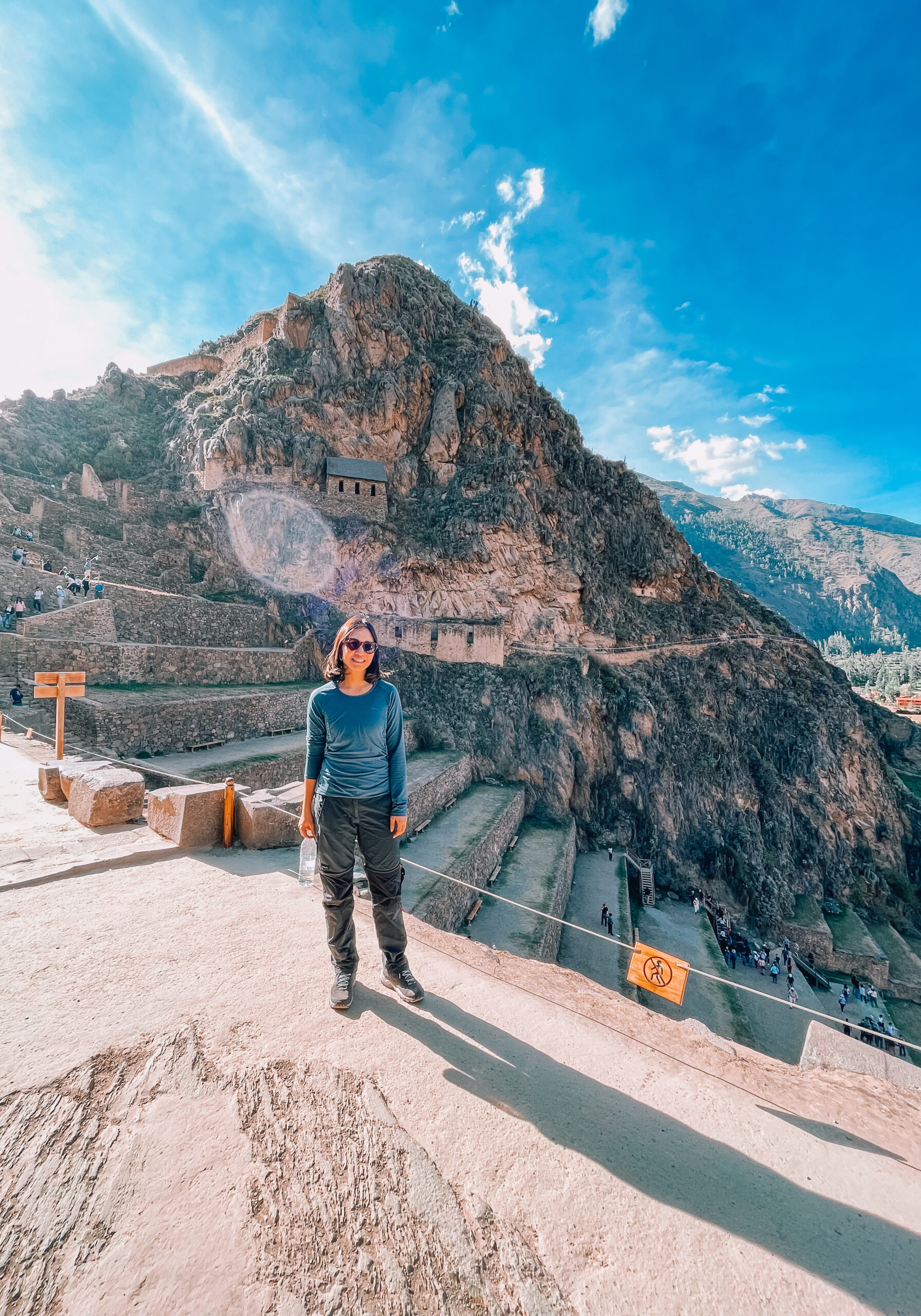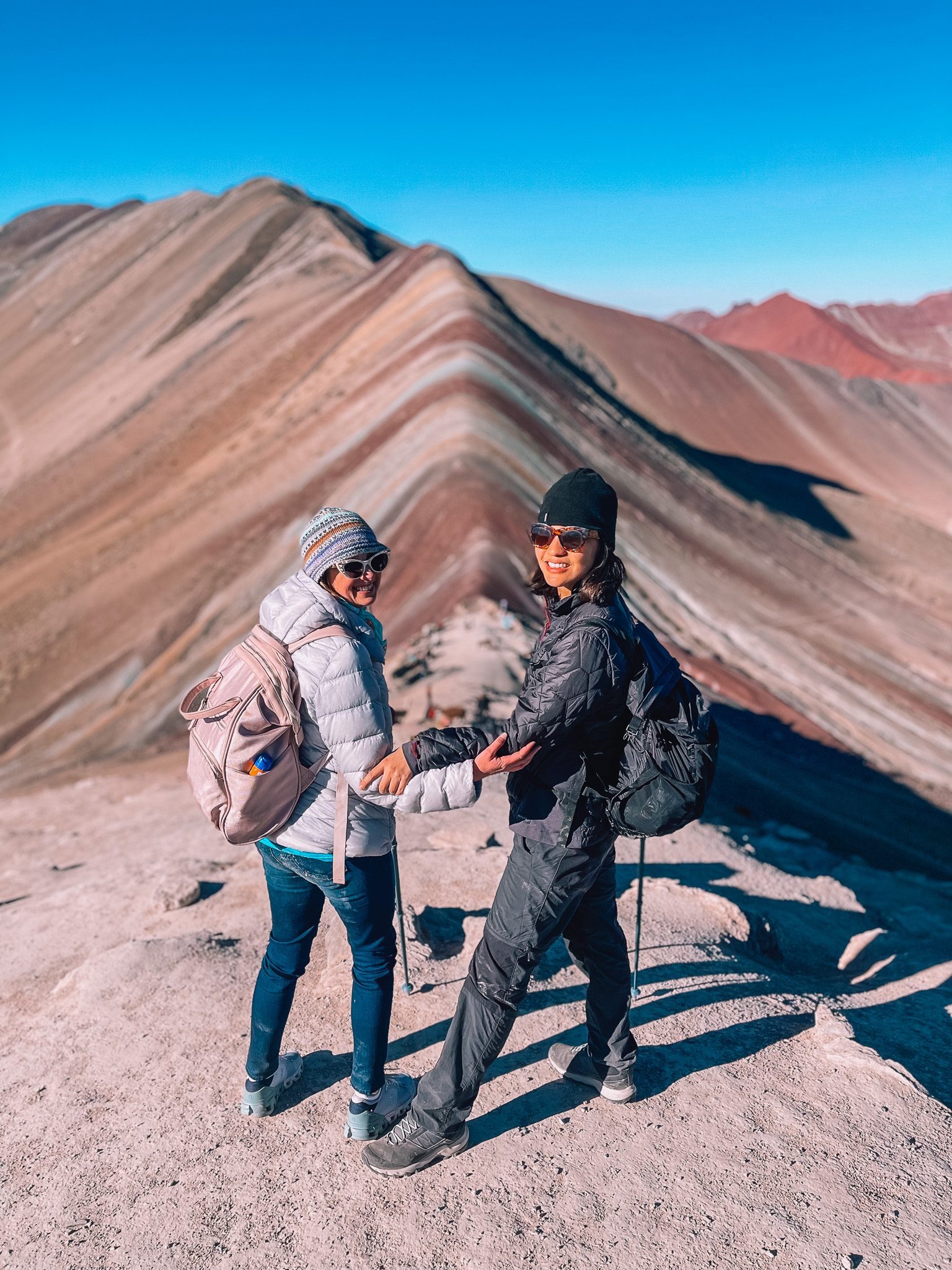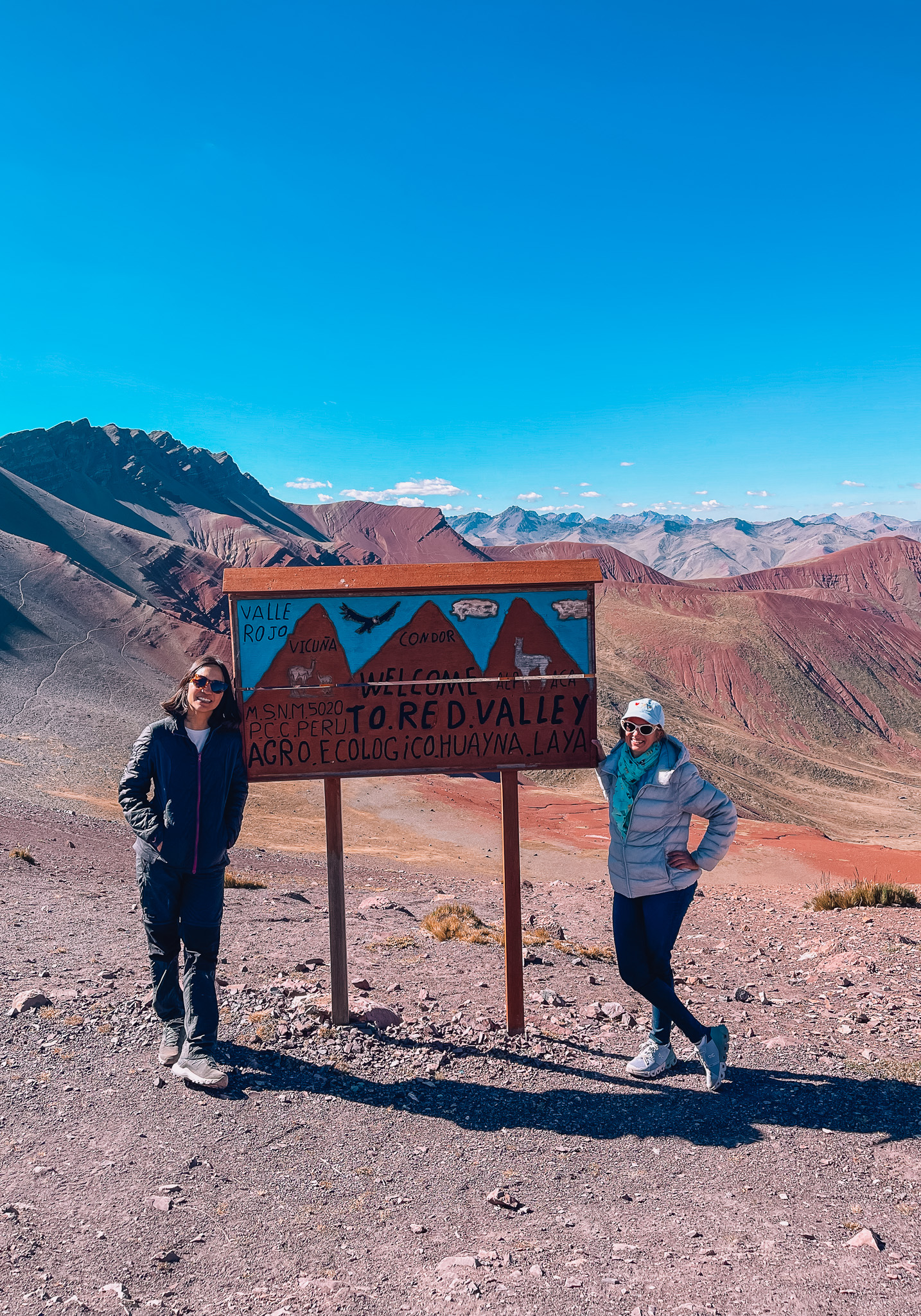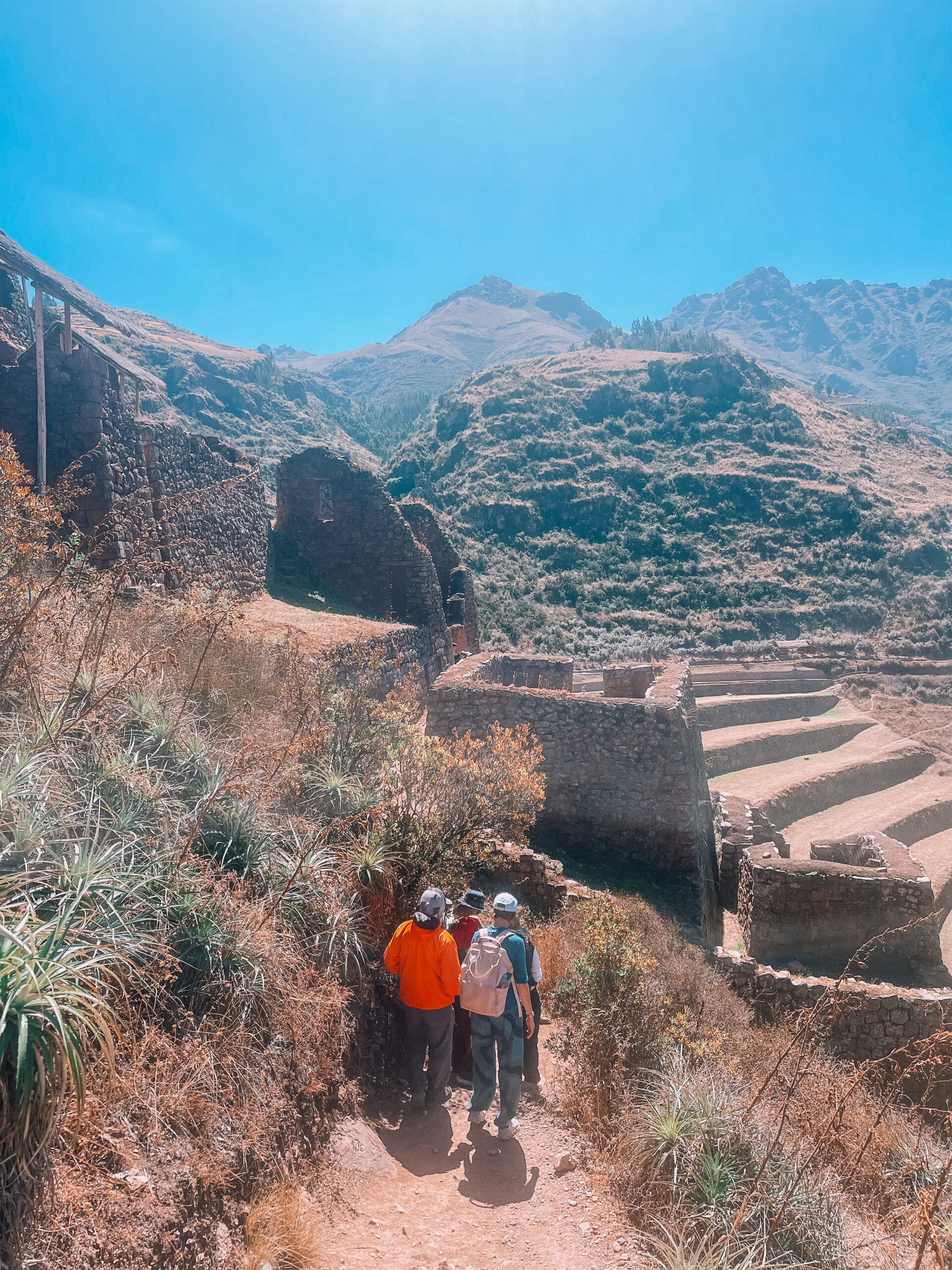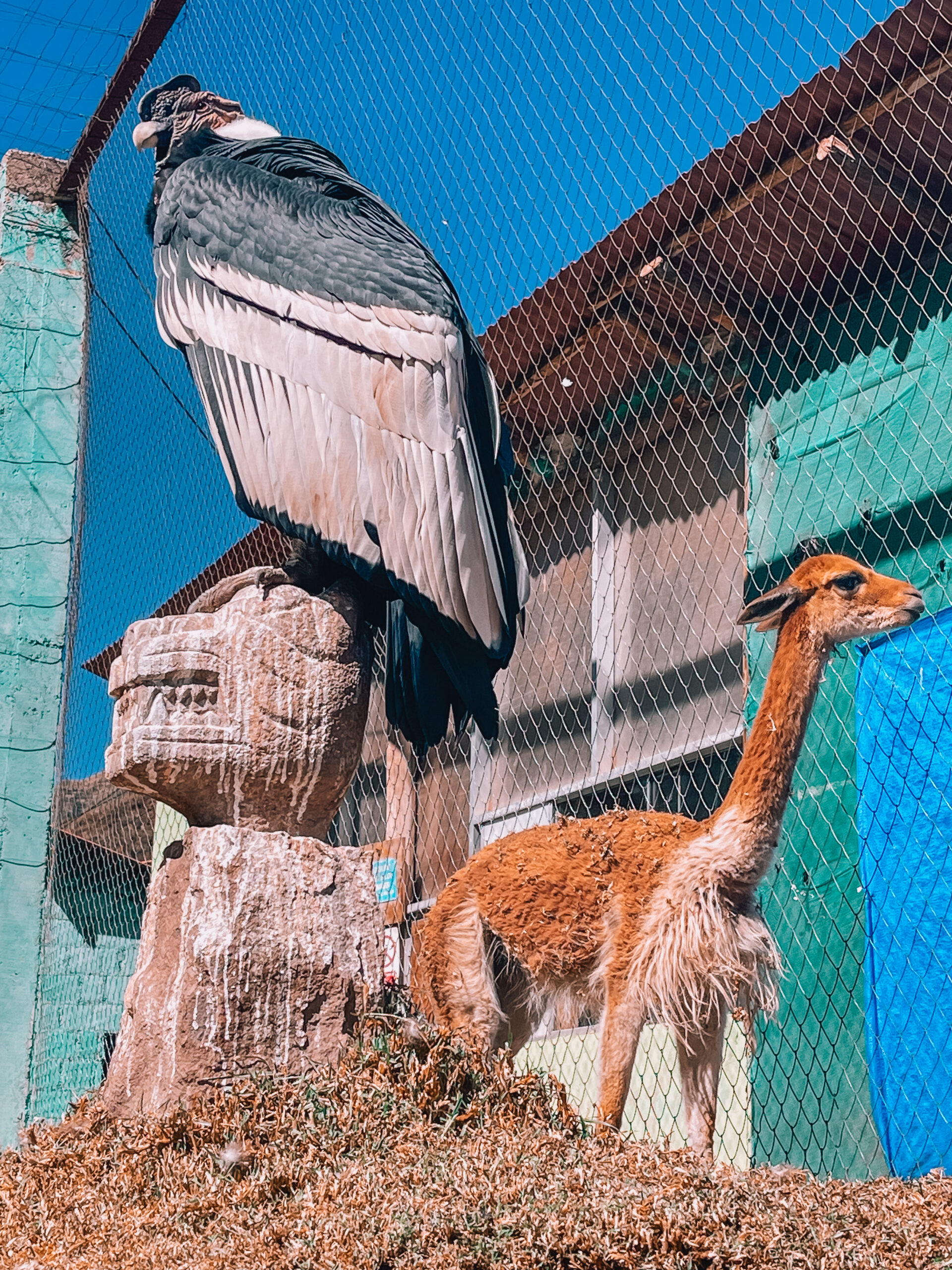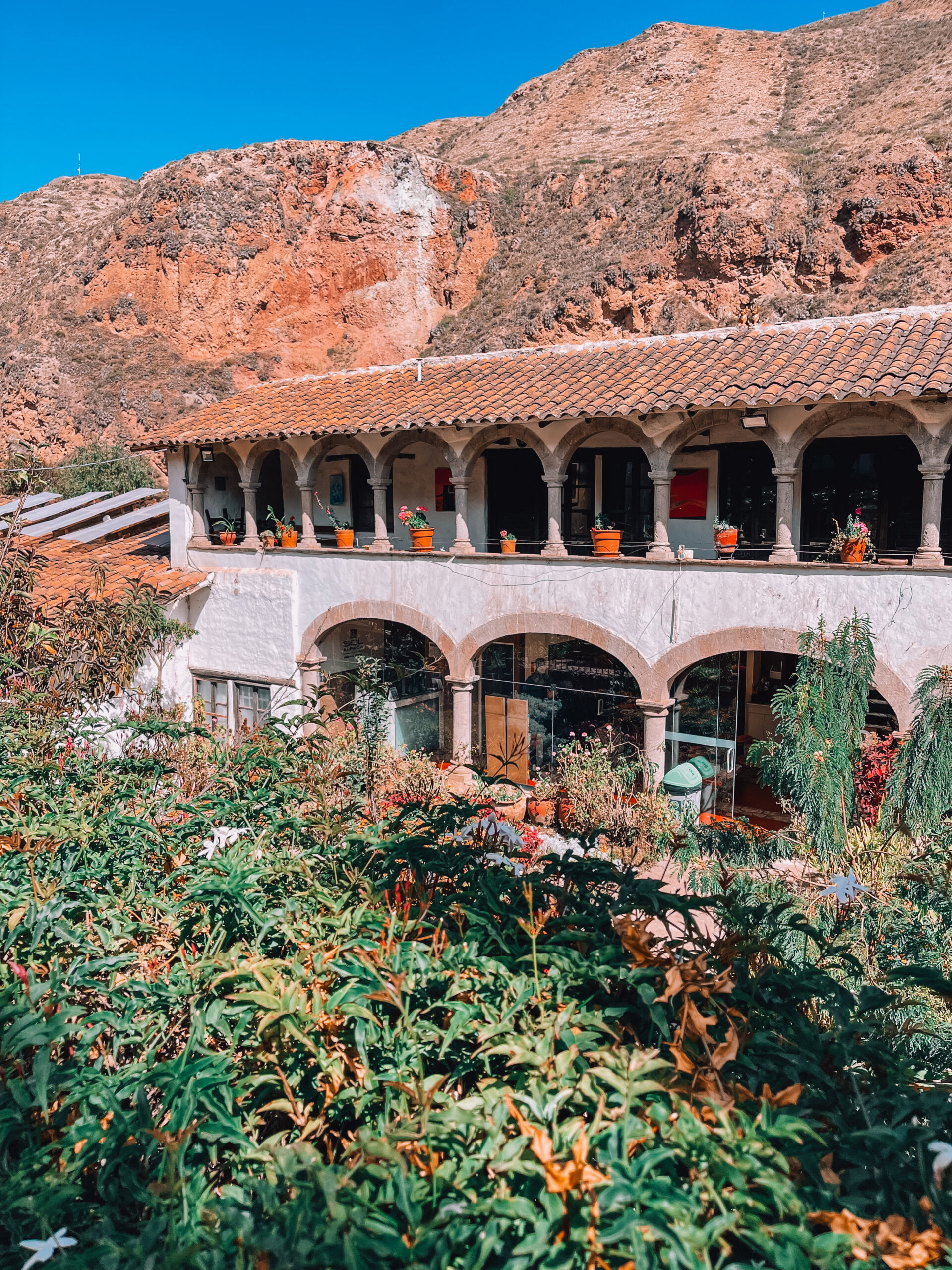Cusco is an amazing jumping off point for unique day trips to the Sacred Valley and the surrounding areas. You will get to see even more stunning Inca ruins and of course, the penultimate trip is to head to Machu Picchu. The Sacred Valley is filled with fertile agricultural land and religious sites, and is a fantastic area if you want to hike and be surrounded by nature. At an average elevation of 2800 metres, the Sacred Valley is a place where travellers often come to relax and acclimatise before taking on some serious hiking.
During our tour, we did these day trips from Cusco. As they often involved long journeys (3-4 hours) and we wanted to beat the crowds, we had very early morning call times like 5 am. The roads in this part of Peru are also often very bumpy and winding, so it helps to make sure that your tour has drivers that can get you there safely.
1. Maras salt mines
The Maras salt mines are one of the largest salt fields in Cusco that were thought to be built from 500 to 1100 AD. Located about 45 minutes away from Cusco, you can see how expansive the site is and how it extends through the valley near a town called Urubamba. The salt mines dazzle in the sunlight with beautiful hues of pink, grey and white, making a stunning backdrop for beautiful photographs. Over 3000 ponds are filled with saltwater and left to evaporate after which the salt is extracted. The most interesting thing about these salt mines are that it is still owned by around 600 different local families in the area. Of course, you can also buy the local salt, including pink salt and other seasoned salt, at various gift shops nearby.
2. Moray ruins
If you are on a tour to the Maras salt mines, you will likely also stop by the Moray ruins. They are three large, circular depressions with terraces carved into the hillside. These depressions have a difference in temperature of 5C from top to bottom. Thus, these ruins are thought to be the location where Incas experimented on agricultural techniques on how to farm in different altitudes and climates throughout Peru.
3. Ollantaytambo
Ollantaytambo is the entry into the world of Machu Picchu. It is where most travellers go to take the train to Aguas Calientes, the closest town to the Machu Picchu site. However, the archeological site itself is mesmerising.
Known as one of the top most important sites in the Inca Empire, it served as a stronghold for the Incan emperor Pachacuti and was a location for the Spanish conquest of Peru. The site looks like a fortress rising above the town of Ollantaytambo. It is theorised to be a place of worship with many temples sites, such as the Temple of the Sun at the top of the massive terraces. There are also many storehouses that were built into the surrounding hillsides, thought to store grains and produce.
Today, it is one of the most impressive Inca ruins to visit and also the important starting point for the well-known multi-day hike to Machu Picchu- the Inca Trail.
4. Rainbow Mountain
With an elevation of 5,036 metres, Rainbow Mountain is a hiking trail that has become increasingly popular to visit around Cusco for its colourful layers that resemble a rainbow. Located 3 hours away from Cusco, Rainbow Mountain is a challenging 3-4 hour hike for even the more seasoned hikers due to its high altitude.
When we visited, the huge change in altitude was an obstacle in getting to the top of the mountain, so we took a shortcut via a motorbike that took about 10 minutes to reach the summit ibefore the crowds came. We reached the top of the mountain at 7.30am and were one of the first few people to get up there. We got to enjoy the peace and quiet to take photographs before the crowds really descended and there was a very long line for photographs. I highly recommend taking the shortcut up the mountain, if you think you will be struggling with the hike and hiking on the way down. An altitude of 5,035 metres is no joke and trying to hike uphill can be very difficult!
5. Red Valley
If you are already at Rainbow Mountain and have the time, I suggest to continue onwards to another trail to the Red Valley nearby. The trail takes about 45 minutes to 1 hour and is relatively flat, except for a long climb back up some stairs at the end. Covered in vivid red colours, the valley consists of iron and clay minerals that contribute to its colour.
As we take the shortcut to Rainbow Mountain, we had plenty of time and energy to visit this area and there were no crowds when we went, compared to Rainbow Mountain! It was a really peaceful (and slow) trek there and I actually preferred this trail than Rainbow Mountain.
6. Pisac
Another important town in the Incan empire, Pisac is a sprawling location with notable 1000 Incan cemetries built into the cliffside. Pisac is also one of the most well preserved sites in the Sacred Valley, so it is no wonder that there are many tour groups that come to visit. Located about 33 kilometres from Cusco, it can take 3-4 hours to tour the site with your guide. We also bumped into so many cute alpacas and llamas here owned by local farmers.
7. Cochahuasi Animal Sanctuary
Although we visited other alpaca farms in Cusco, one trip that was a highlight was the Cochahuasi Animal Sanctuary. It is one of the few places in the world that houses the almost extinct Andean condors and you can actually see them flying and upclose in one of their enclosures. The condors are huge (over up to 3 metres of wingspan) and about the size of a 10 year old child. Many of the native animals like monkeys, alpacas, llamas, vicunas and birds were rescued and are being rehabilitated before being release into the wild. You can also get a guided tour of the place with great explanations and introductions to the animals in the sanctuary.
8.Tunupa restaurant in Urubamba
As part of our tour, we had our lunch included for most days. One of the most striking restaurants that our tour brought us to was the Tunupa restaurant in Urubamba. The restaurant was situated in a sprawling hacienda or Spanish-style villa with a beautiful courtyard and garden next to the Urubamba river. The buffet-style lunch had a wide variety of enticing appetisers, sushi, fresh salads, fruits, desserts and traditional Peruvian food like ceviche and alpaca. After lunch, we wandered around the stunning property and took many photographs before it was time to head off to our next destination.
Although you may only go to Cusco to visit Machu Picchu, I highly recommend spending several days in the Sacred Valley to explore these interesting ruins and attractions. In fact, I would rate some of these ruins like Ollantaytambo and Swaqsaywaman in Cusco to be even just as impressive as Machu Picchu. If you prefer to be around nature and enjoy a more relaxed vibe, the Sacred Valley is a must visit.
